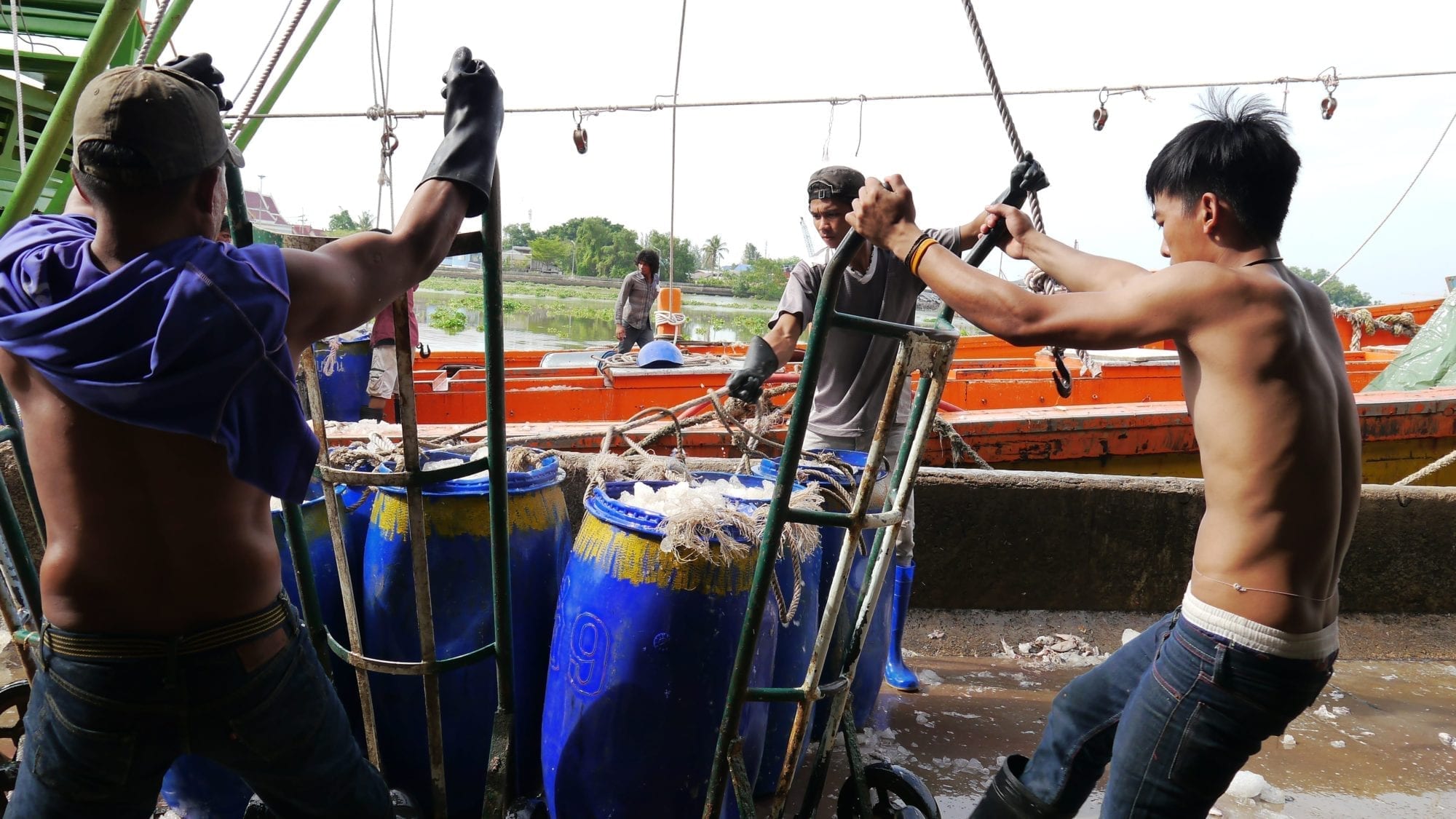
Dec 8, 2016
Many of the more than 150 million migrant workers around the world endure abusive conditions—and one of the most exploitative phases of transnational labor migration takes place before migrants even leave their home country: recruitment for work abroad.
Forced to take on debt to pay the exorbitant fees labor brokers charge to secure a job, migrant workers often cannot repay it even after working for years. Trapped in debt bondage, a situation further exacerbated when workers’ visas are tied to employers and employers confiscate workers’ passports, they have no means of escape when employers abuse them or withhold wages.
“Labor recruitment fees can lead to debt bondage and should be eliminated,” says Sonia Mistry, Solidarity Center senior program officer for Asia. Mistry is taking part this week in Civil Society Days, a series of panels and events by nongovernmental organizations leading up to the December 10–12 Global Forum on Migration and Development (GFMD) meeting. Participants in Civil Society Days will present recommendations to representatives of the more than 100 governments meeting at the annual GFMD conference.
GFMD events, taking place this year in Bangladesh, coincide with Human Rights Day December 10. Commemorated annually, Human Rights Day marks the date in 1948 when the United Nations General Assembly adopted the Universal Declaration of Human Rights, which includes the right to freedom of peaceful assembly and association.
‘Multinationals Must Hold suppliers Accountable for Forced Labor’
Mistry, who will speak Friday on the Civil Society Days panel, “Protecting and Empowering Migrant Workers in all Global Supply Chains,” says multinational corporations have not done enough to prove to consumers that their supply chains are not tainted with forced labor.
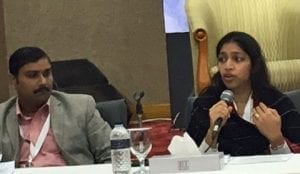
Solidarity Center’s Sonia Mistry outlined strategies for reforming exploitative migrant labor recruitment practices.
“Multinational corporations need to exert their significant power as buyers to hold suppliers accountable for supply chains free of forced labor,” she says. Companies argue that it is too difficult or expensive to completely map their supply chains.
The recruitment and placement industry is a $464.3 billion-a-year industry.
During the recruitment process, it is routine for recruiters and their agents to make false promises about the jobs on offer, charge would-be migrants fees that exceed their annual income and offer loans at usurious rates, demanding property deeds as collateral.
Mistry and co-panelist Anup Srivastava from the Building and Wood Workers International (BWI) say promoting the rights of migrant workers in supply chains requires a multifaceted approach that can be undertaken even in difficult environments—“so there is no space for ‘it’s too hard’ excuses by employers or governments,” Mistry says.
At the panel, Mistry will recommend:
- All workers have equal access to internationally recognized labor standards, regardless of where they are.
- Workers—who are the best workplace monitors—have the freedom of association rights they are due and are protected to raise and help address workplace safety, health, legal and rights violations. “At all points in the supply chain, unions serve as key partners in promoting decent work and addressing some of the most egregious rights violations, including child labor, forced labor and gender-based violence,” says Mistry. “No auditing system or third-party verification scheme can replace the role of unions.”
- Binding and enforceable agreements be struck to enforce and protect worker rights. These can take many forms, from an International Labor Organization (ILO) standard to a collective bargaining agreement.
Unions Call on GFMD to Take Action to Protect Migrant Worker Rights
Participants at the GFMD’s ninth meeting are considering how member states can design a “Global Compact” to govern the mobility of migrant workers and the possible commitments by stakeholders to create a comprehensive global framework and follow-up mechanism. The Solidarity Center, along with the Council of Global Unions (CGU) and the AFL-CIO, is calling for recognition in the Global Compact negotiations of the “vital role of the ILO, founded on a mandate of social, justice, peace and democracy.”
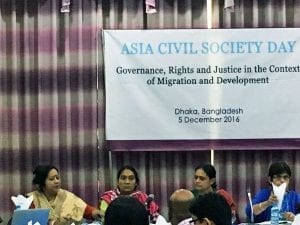
Participants from unions around the globe held discussions and events in preparation for the GFMD meeting. Credit: Solidarity Center/Sonia Mistry
As noted by the CGU, the “ILO has important standards related to labor migration and a robust system to supervise those instruments. It is also the institutional protector of other workers’ rights that also apply to migrant workers, such as trade union rights (including freedom of association and collective bargaining), forced labor (including trafficking) and child labor, occupational health and safety protection, social security and many others.”
Civil society groups are urging the GFMD to take action to protect migrant workers’ rights by fulfilling the portion of the UN’s 2030 Sustainable Development Goals (Goal 8) that calls for taking immediate measures to eradicate forced labor, end modern slavery and human trafficking, protect labor rights and promote safe and secure working environments for all workers, including migrant workers.
The GFMD is a non-binding and government-led process open to United Nations member states and observers “to advance understanding and cooperation on the mutually reinforcing relationship between migration and development and to foster practical and action-oriented outcomes.”
Unions and other civil society organizations have been advocating for a stronger role for civil society in the GFMD.
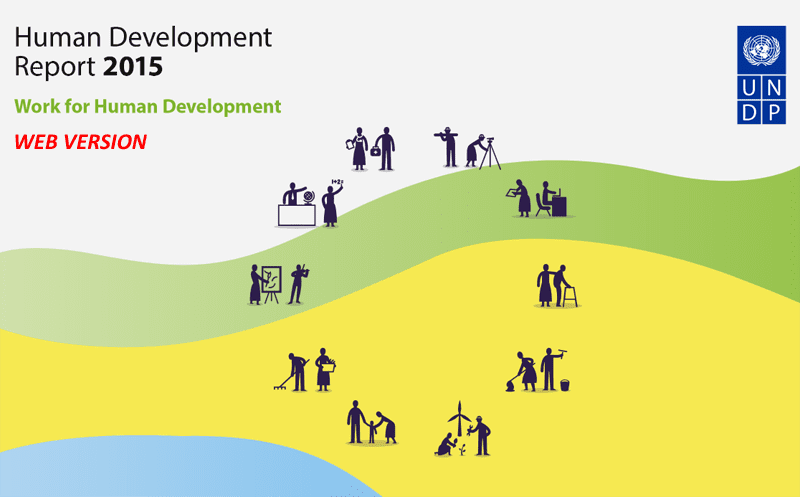
Dec 14, 2015
Equitable and decent work for all and strategies such as promoting collective action, trade unionism and other worker rights are essential to achieve worker well-being, according to a report by the United Nations Development Program (UNDP) released today.
“People are the real wealth of nations, and human development focuses on enlarging people’s choices,” according to the 2015: Work for Human Development report, which notes that rapid technological progress, deepening globalization, aging societies and environmental challenges are rapidly transforming what work means today and how it is performed.
On the positive side, the report finds that between 1990 and 2015, the number of people in extreme poverty worldwide fell from 1.9 billion to 836 million and significant strides were made in reducing child mortality and improving access to drinking water and sanitation, even as the world’s population rose from 5.3 billion to 7.3 billion.
Yet in 2012, some 21 million people worldwide were in forced labor, trafficked for labor and sexual exploitation or held in slavery-like conditions, the majority of whom are women and girls, according to the report. Forced labor is thought to generate around $150 billion a year in illegal profits.
Further, key findings also include:
- Some 80 percent of the world’s people have only 6 percent of the world’s wealth. The share of the richest 1 percent is likely to be more than 50 percent by 2016.
- Wages lag behind productivity, and workers’ shares in income have been falling.
- Women are disadvantaged in both paid and unpaid work.
Income Inequality, Gender Inequality ‘Not Sustainable’
“Inequality is the developmental, political and social challenge of our time. Inequality is an issue of democracy,” said Selim Jahan, director of the UNDP’s Human Development Report Office. “When 1 percent of the people own 48 percent of the world’s wealth, that’s not sustainable, Jahan said, speaking earlier this year at a Labor and Employment Relations Association meeting in Washington, D.C.
Given that millions of workers support their families by cleaning homes, selling goods in outdoor markets and hire on as day laborers, Jahan also asked whether “we need a new social contract, one that includes informal-sector workers.”
The report’s findings on women are especially scathing. Although women account for the majority of global work—contributing 52 percent compared with 48 percent for men—women earned 24 percent less than men, the report finds. Further, women carry out three of every four hours of unpaid work. In contrast, men account for two of every three hours of paid work.
“Women’s employment is not an abstract question,” said Jahan. “It has implications for the community.”
Enlarging child care options, enhancing maternal and paternal leave policies and legislative action to reduce inequalities between women and men in the workplace are some of the report’s recommendations for balancing care and paid work, making work sustainable and addressing youth unemployment.
The report, accessible in multiple languages, also for the first time is available in an interactive online version.
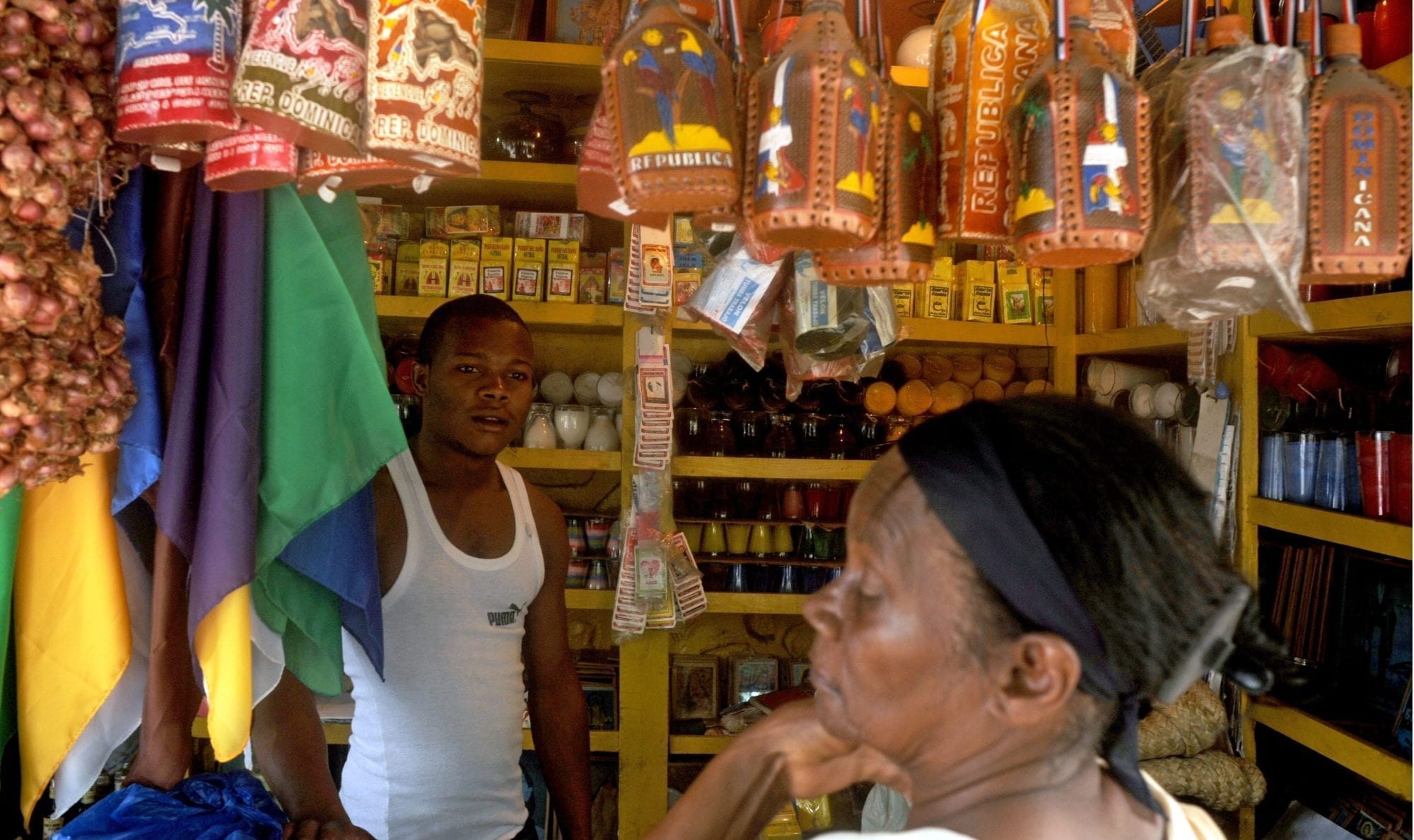
Aug 4, 2015
More than 300,000 domestic workers in Hong Kong, Special Administrative Region of China have migrated from the Philippines, Indonesia and other Southeast Asian countries seeking jobs to support their families. Recent high-profile instances of employer abuse against these domestic workers—unpaid wages, 24/7 working hours, and even physical assault—offer a glimpse into the migrant crisis that recently has focused the world’s attention on longstanding issues of debt bondage, human trafficking and mistreatment of workers striving to earn a decent living in the region.
But when they face an abusive work situation in Hong Kong, SAR, migrant domestic workers—nearly all of whom are women—have an opportunity for strong support through the Federation of Asian Domestic Workers Union (FADWU).
“We help them file a case with the Labor Department because, as a union, we can have the right of representation in a tribunal,” says Leo Tang, organizing secretary for the Hong Kong Confederation of Trade Unions (HKCTU), which includes FADWU as an affiliate. “Sometimes we provide shelter to those in need.”
Solidarity Center Labor Migration Conference
Tang is among more than 200 migrant worker rights experts taking part in the Solidarity Center’s Labor Migration conference in Indonesia, August 10–12. Conference participants will strategize within themes that focus on labor recruitment reform; organizing; and migrant worker access to justice.
Assisting workers first requires reaching out to them before they need support. That’s why organizing domestic workers is fundamental for the five unions that comprise FADWU. Based on nationality, the unions provide a cultural meeting ground that extends to education and training about their rights on the job.
Tang now is taking the members to the next step: shaping an inclusive union. “We are trying to unite all nationalities, all the migrants, under the federation structure,” he says.
In Mexico, where 10 percent of domestic workers migrate from countries such as Honduras and Peru, the Center of Support and Training for Domestic Workers (CACEH), reaches out to these workers to educate them about their rights.
“They have no information,” says CACEH leader Marcelina Bautista. “Often what happens is that their employer starts to retain their salaries to pay back the air ticket cost (the employer) spent bringing them to Mexico,” she said, speaking through a translator. Bautista, who also serves as International Domestic Workers Federation (IDWF) regional coordinator for Latin America, also will share her insights at the Solidarity Center event, “Labor Migration: Who Benefits? A Global Conference on Worker Rights and Shared Prosperity
CACEH, which Bautista founded 15 years ago, now has an extensive word-of-mouth network that enables them to organize domestic workers. CACEH also provides education services and train-the- trainer workshops that further expand the organization’s connection with domestic workers.
Market Vendors Join Forces to Improve Their Lives
In the Dominican Republic, where 60 percent of the workforce labors in the informal economy, Pablo de los Santos, president of National Federation of Sellers and Market Workers, says organizing market sellers involves letting them know about the disadvantages they face as self-employed individuals.
“I tell them about the advantages they could have once they organize themselves: better working conditions, living conditions, better benefits, for themselves and their families,” he said, speaking through a translator. Up to 60 percent of informal workers in the Dominican Republic are migrant workers, primarily from Haiti.
The organization, which started out in 2007 with a pilot program and now has branches in all 32 states, has sufficient bargaining power that it convinced banks to give 1 percent loans to dozens of informal economy workers, an achievement individual sellers often unattainable. The federation also negotiated improved infrastructure in Santo Domingo’s bustling open markets, and is seeking more space for Haitian workers.
Like Santos, Bautista is looking forward to taking part in the Solidarity Center labor migration conference to improve the ability of her organization to help workers. “It is very important to learn from the experience of all the other domestic workers who work in migration, especially colleagues who work in Asia and the United States, because they have a lot of experience working with migrant workers,” she says.
Follow Labor Migration: Who Benefits? at the Solidarity Center website and on Twitter @SolidarityCntr.
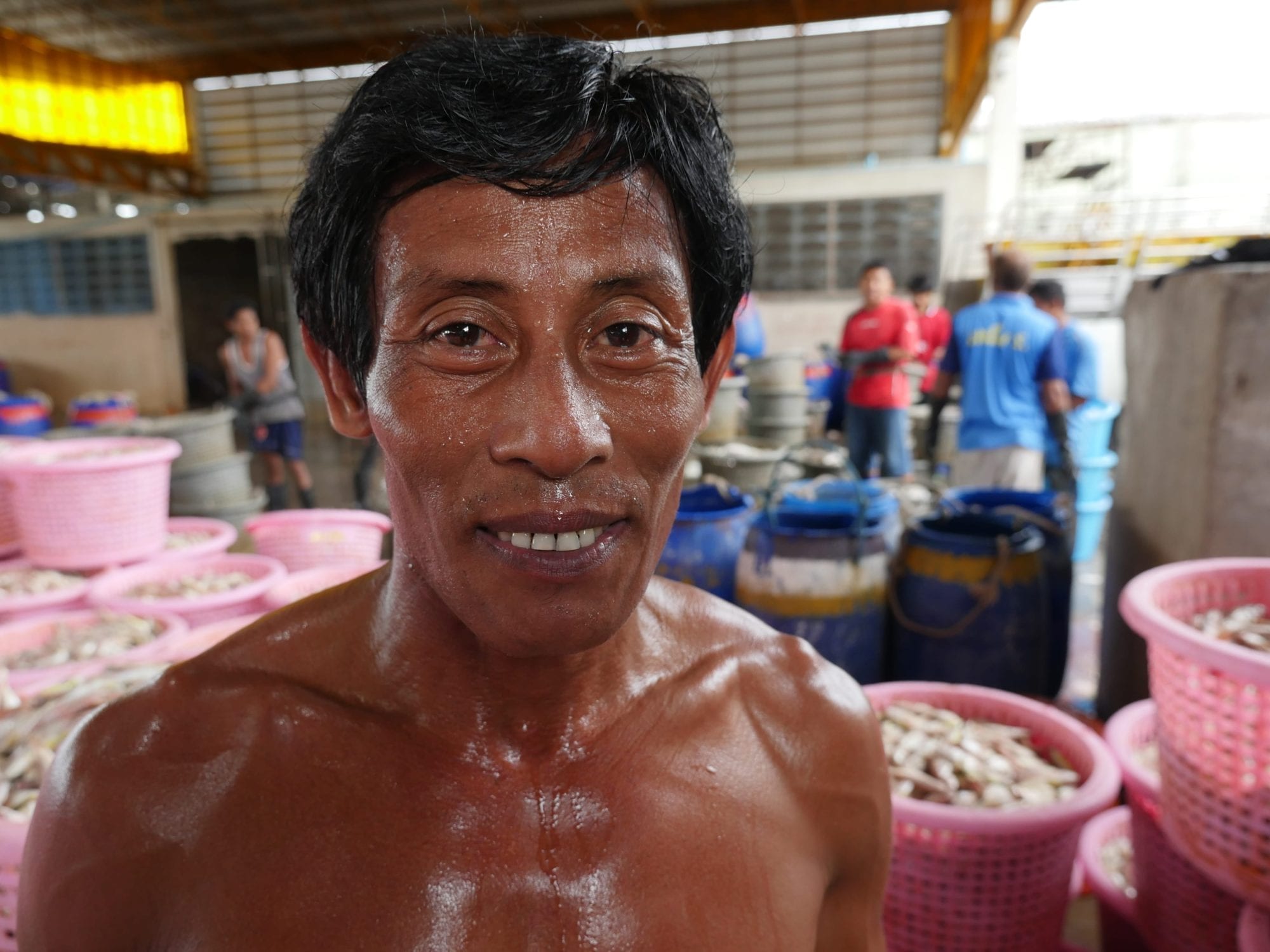
Jul 30, 2015
In Malaysia, up to 40 percent of workers are migrants from other countries. Over in Bangladesh, more than 600,000 workers migrate each year for jobs, and at least 5 million Bangladeshis currently work in other countries. The Gulf Cooperation Council (GCC) countries on the Arabian Peninsula rely on migrant labor to fill more than 90 percent of private-sector jobs, with nearly 1.8 million migrants working in Qatar alone, 90 percent of the country’s population.
Most of the 247 million migrants in the world migrate for work. Although they may have starkly different backgrounds, when they migrate, they often share common experiences:
- They may be exploited by labor recruiters who charge them huge fees to get jobs, often requiring them to go into debt bondage, working with no salary so they can pay off their recruiter.
- They may be trafficked to engage in work they never signed up to do and then held captive by employers.
- They may be forced to live in unsanitary, unsafe conditions that may lack electricity and running water; they receive few or no days off and many are not paid.
- In the most extreme situations, they lose their lives on the job.
200+ Migrant Worker Experts Gather in Indonesia
How workers migrate and under what terms are critical questions for global economic, social and democratic development and, as we are reminded today, on World Day against Trafficking in Persons, millions of people also are trafficked each year, most often for labor exploitation.
Next month, more than 200 migrant worker and labor trafficking activists will meet in Bogor, Indonesia, to discuss strategies and solutions for the world’s growing migration and labor trafficking crises.
“Labor Migration: Who Benefits? A Solidarity Center Global Conference on Worker Rights & Shared Prosperity,” will bring together activists and leaders like Leo Tang, organizing secretary for the Hong Kong Confederation of Trade Unions (HKCTU).
“Connecting people who are working for migrant workers is very important,” says Tang, who coordinates programs for migrant domestic workers across Hong Kong, Special Administrative Region of China. “These are particularly important years for the domestic worker movement and the migrant worker movement.”
Many who migrate abroad for jobs are domestic workers, the vast majority of whom are women. In fact, women make up some 50 percent of international migrants.
Labor Recruitment, Organizing and Migrant Access to Justice
Pablo de los Santos, president of the National Federation of Seller and Market Workers in the Dominican Republic, said through a translator that he wants to be able to “come out with examples from the conference to share with his community here to dispel myths about migrant workers,” and “would love to learn techniques on how to strengthen informal sector workers and how to better organize them.”
Co-hosted with one of our allies in Indonesia, Migrant Care, the conference is focused on labor recruitment reform, organizing workers, and access to justice for migrant workers. Among the many strategy-focused workshops are those on gender-based violence in the workplace; alternatives to private recruitment; and supply chains and migrant workers.
Follow Labor Migration: Who Benefits? at the Solidarity Center website and on Twitter @SolidarityCntr.
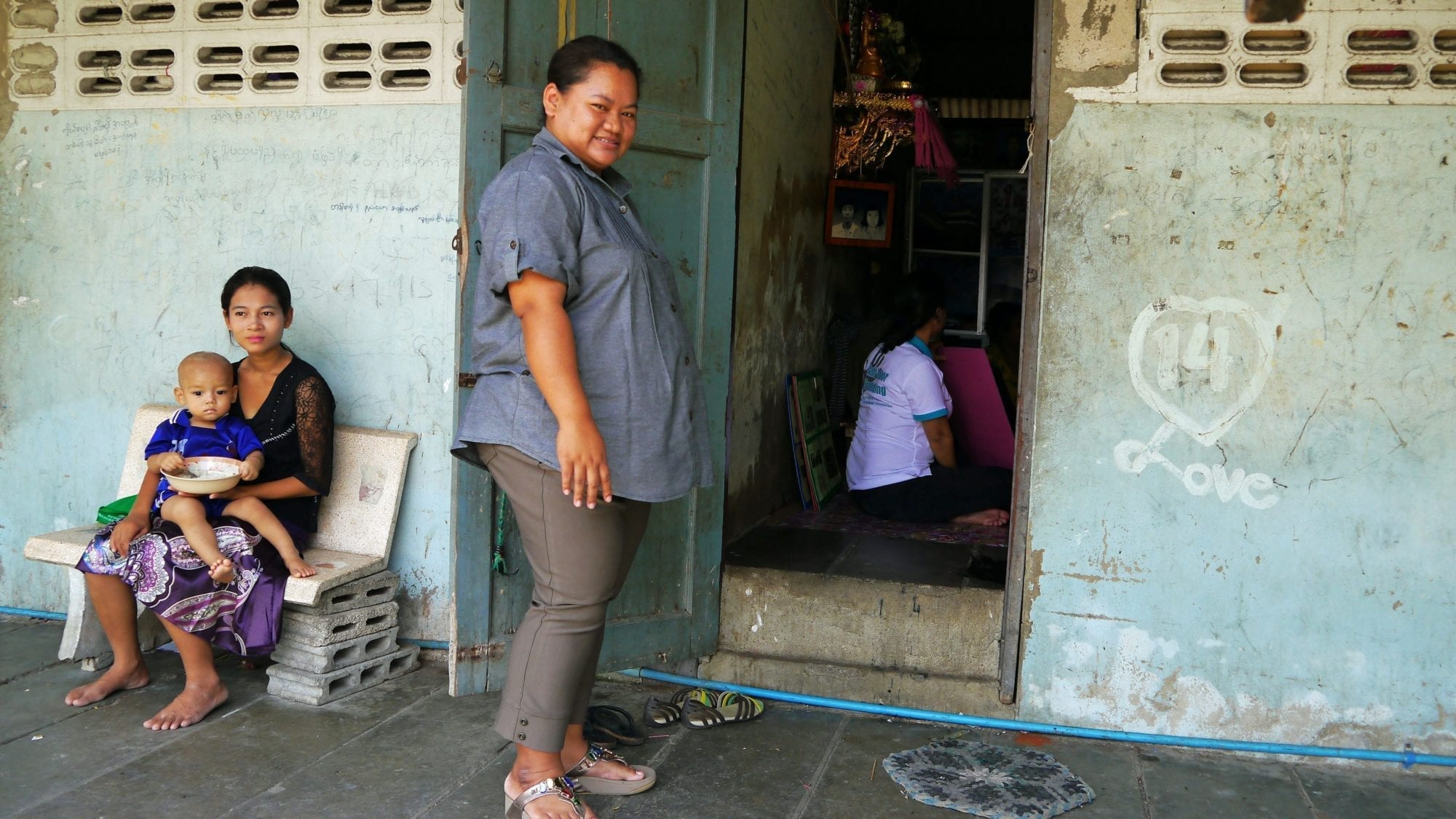
Jul 30, 2015
Global demand for the services of domestic workers, including household workers, caregivers and cooks, has been steadily rising in recent years. Yet as the International Labor Organization (ILO) shows in a new report on migrants from South Asia, domestic workers, especially women migrant workers, remain an “unrecognized and invisible” part of the labor force.
Further, the report states that “inadequate regulation and loopholes in existing emigration procedures have allowed unregistered agents to exploit potential migrants for monetary gain.” As a result, “emigrant workers are prone to different kinds of abuse and even to situations of forced labor.”
“Indispensable Yet Unprotected: Working Conditions of Indian Domestic Workers at Home and Abroad,” highlights forced labor and trafficking in South Asia and the Persian Gulf with the aim to “provide policy-makers and service providers with deeper insight into the nature of forced labor and trafficking” of domestic workers in and from India.
Among the workers the ILO surveyed, Jameela, 50, was enticed by a labor recruiter to migrate abroad from her home in Kerala in southwest India, for domestic work in one of the Persian Gulf states. The recruiter did not inform her about the working conditions she would face, and Jameela describes how her household employer not only forced her to work long hours without breaks but also withheld her wages, physically abused her and isolated her from other members of the household.
Jameela’s experiences are unfortunately all too common. The ILO reported that domestic workers throughout Arabian Gulf Coast countries suffered similar forms of abuse and many more. Women workers and migrant workers are particularly vulnerable to exploitation due to a lack of worker rights protections. Many are deceived about the nature of the work they will be required to do. Many also have their passports confiscated and their wages deducted or withheld by their employers. Workers are even threatened that they will be punished, sometimes with legal force, if they attempt to leave their abusive employers.
The ILO’s Domestic Workers Convention 189 serves as a framework for respecting migrant domestic worker rights at home and abroad. So far, 21 countries have ratified the convention.
The report demands that domestic workers in all countries who ratified ILO Declaration of Fundamental Principles and Rights at Work in 1998 must have their rights protected. This document outlines core labor standards which all signatories are expected to respect and promote, including the eradication of forced labor in all forms.
Last year, the ILO introduced the 2014 Protocol to the ILO’s Forced Labor Convention 29 and a Recommendation on Supplementary Measures for the Effective Suppression of Forced Labor. The organization is hoping to get at least 50 countries to sign the Forced Labor Protocol by 2018. Part of the ILO campaign includes spreading awareness of the abuses that migrant domestic workers face.
“Armed with this knowledge,” the ILO says, “action to combat trafficking in the region will become more effective, finally bringing an end to this unacceptable form of human exploitation.”







